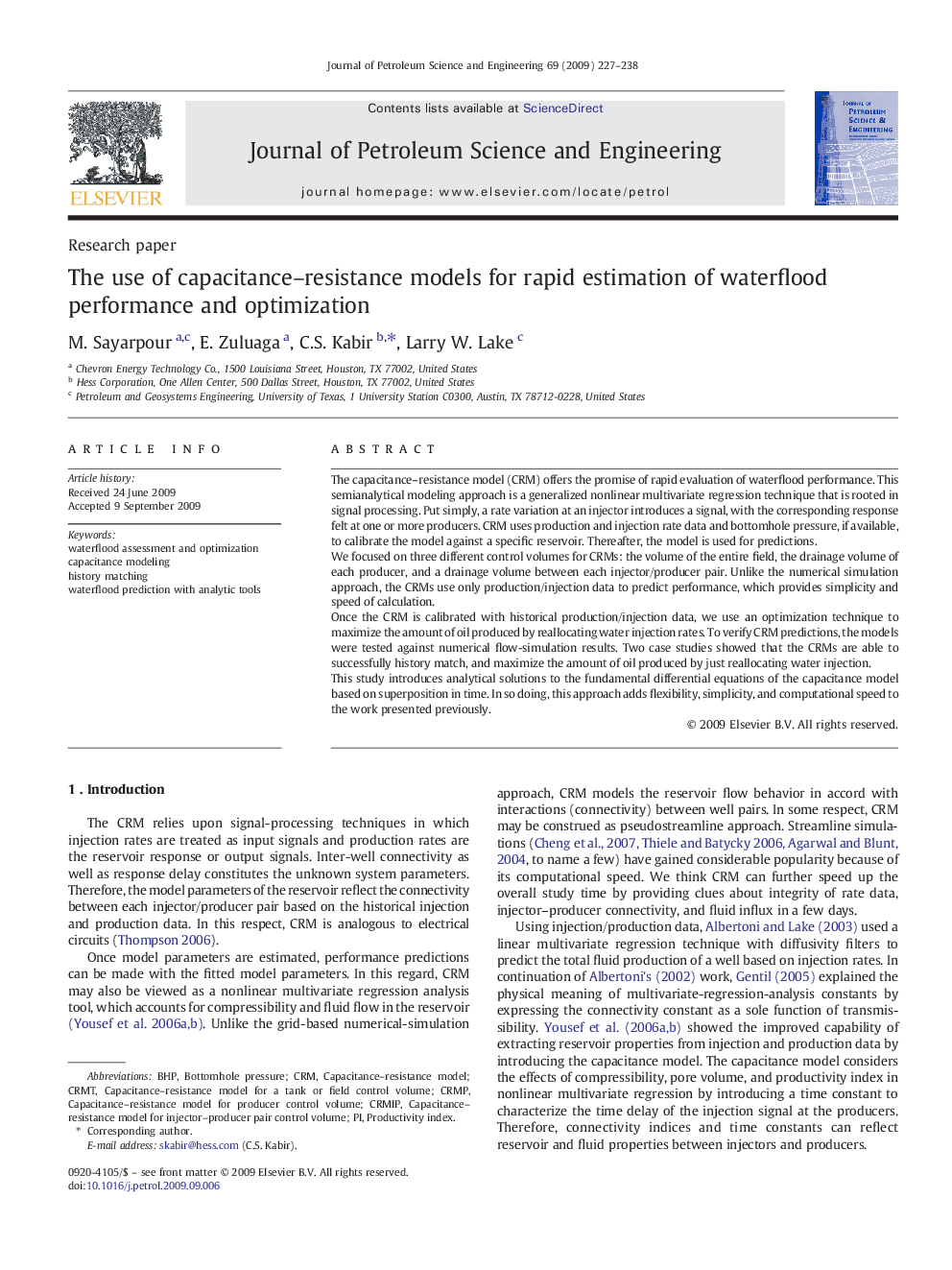| کد مقاله | کد نشریه | سال انتشار | مقاله انگلیسی | نسخه تمام متن |
|---|---|---|---|---|
| 1756048 | 1522871 | 2009 | 12 صفحه PDF | دانلود رایگان |

The capacitance–resistance model (CRM) offers the promise of rapid evaluation of waterflood performance. This semianalytical modeling approach is a generalized nonlinear multivariate regression technique that is rooted in signal processing. Put simply, a rate variation at an injector introduces a signal, with the corresponding response felt at one or more producers. CRM uses production and injection rate data and bottomhole pressure, if available, to calibrate the model against a specific reservoir. Thereafter, the model is used for predictions.We focused on three different control volumes for CRMs: the volume of the entire field, the drainage volume of each producer, and a drainage volume between each injector/producer pair. Unlike the numerical simulation approach, the CRMs use only production/injection data to predict performance, which provides simplicity and speed of calculation.Once the CRM is calibrated with historical production/injection data, we use an optimization technique to maximize the amount of oil produced by reallocating water injection rates. To verify CRM predictions, the models were tested against numerical flow-simulation results. Two case studies showed that the CRMs are able to successfully history match, and maximize the amount of oil produced by just reallocating water injection.This study introduces analytical solutions to the fundamental differential equations of the capacitance model based on superposition in time. In so doing, this approach adds flexibility, simplicity, and computational speed to the work presented previously.
Journal: Journal of Petroleum Science and Engineering - Volume 69, Issues 3–4, December 2009, Pages 227–238